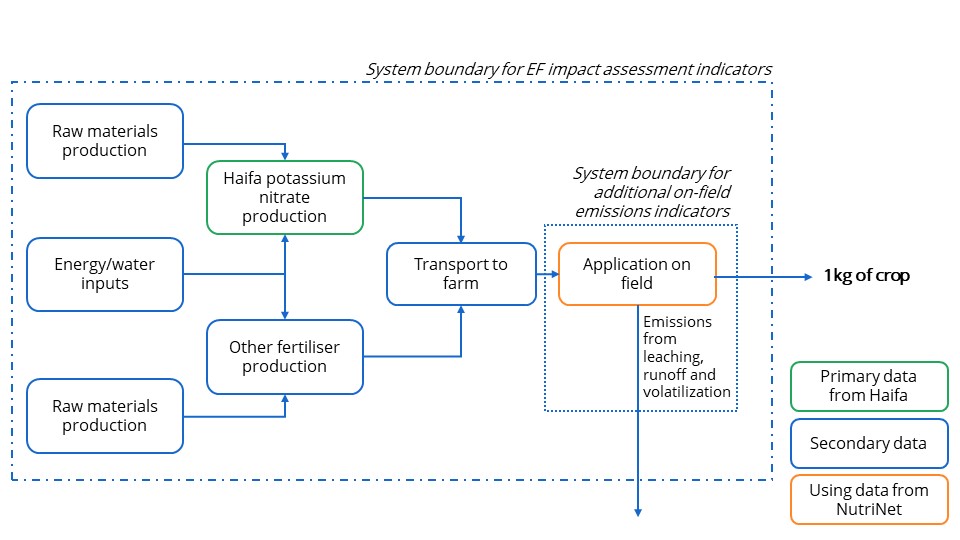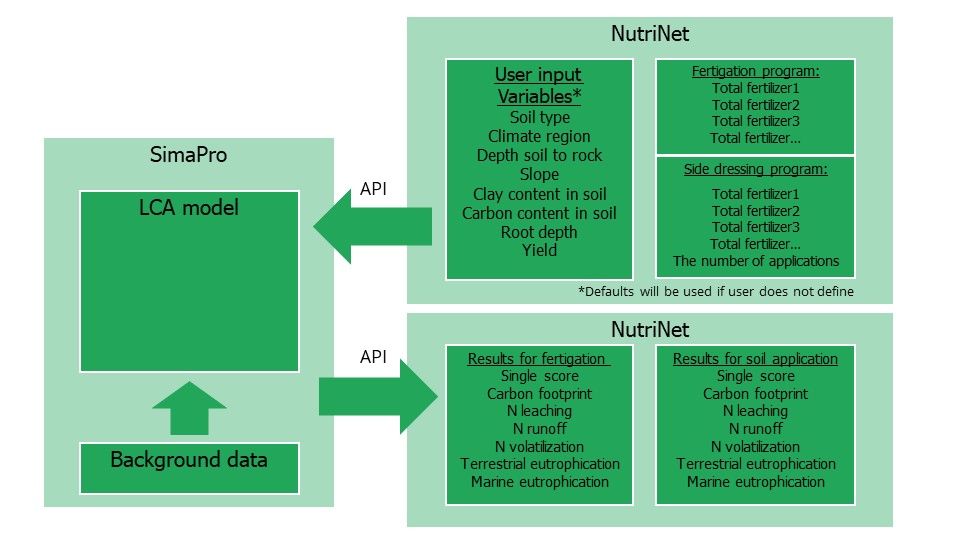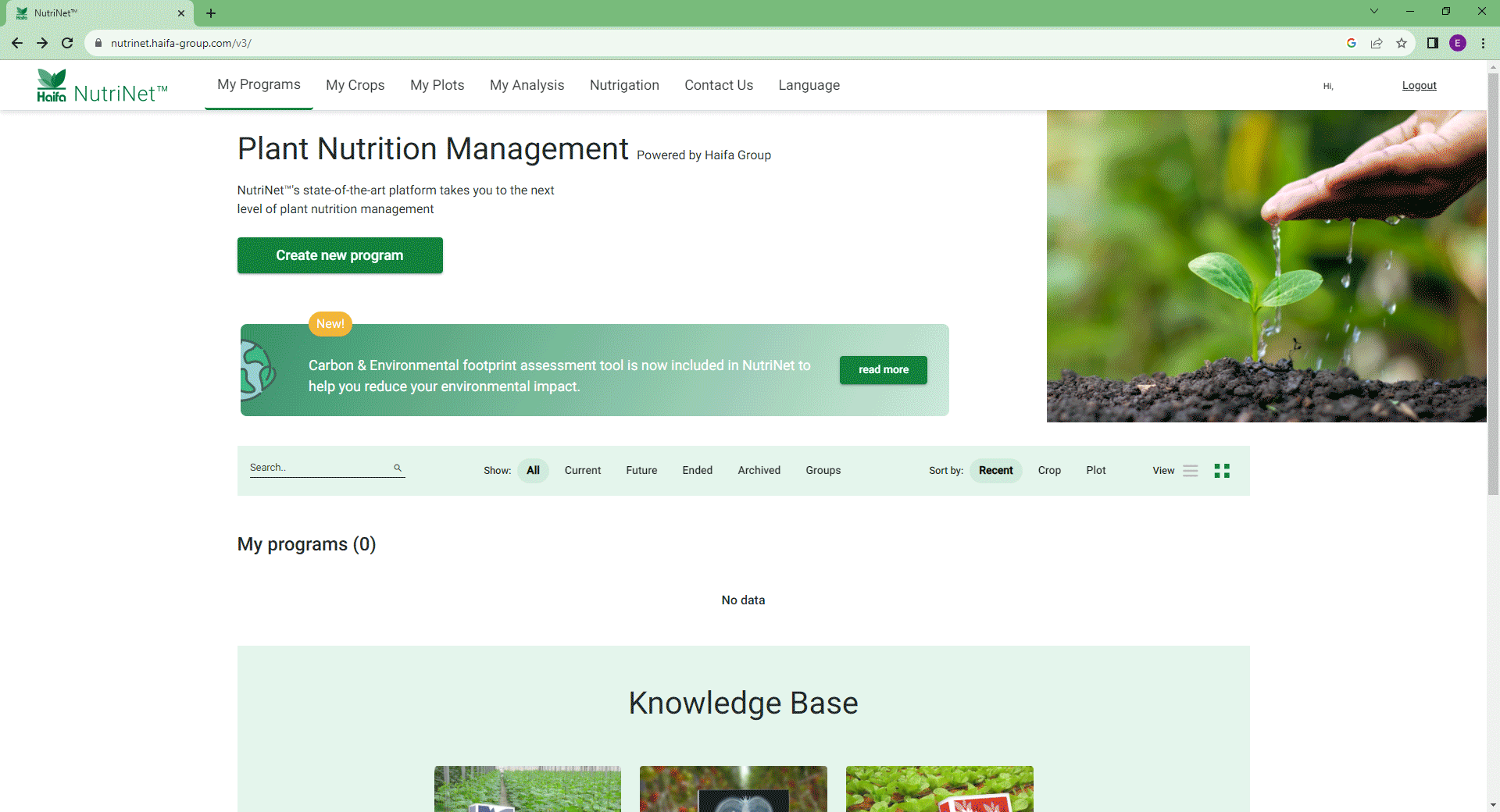Advancing precision fertilization: empowering farmers with environmental footprinting
Fertilization is a critical aspect of modern farming. It is what allows farmers to get the crop yields they need. However, there are big differences in environmental impact between different approaches to fertilization, and farmers aren’t always aware of how much of their impact they could reduce by switching methods. For this knowledge to become widespread, the world needs easy, scalable and science-based footprinting methods that don’t take much expertise from individual farmers. Haifa Group is paving the way.
About
Haifa Group, a leading provider of specialty fertilizers, is dedicated to offering comprehensive nutritional solutions for precision agriculture that reduce the environmental impact of fertilization and increase crop yields.
One of the key practices they promote is fertigation, which involves applying nutrients through irrigation systems. Fertigation’s low and continuous application rate results in higher nutrient use efficiency (NUE), requiring lower amounts of fertilizer to be produced and applied, reducing the excess nutrients that can volatilize, leach, or run off into water bodies.
Challenge
Haifa wants to spread the knowledge of the environmental benefits of fertigation, compared to the more conventional topsoil application of fertilizer. This requires reliable environmental footprinting information. Haifa needs a solution with a wide reach, as they supply to farmers all across Europe. Their ultimate goal is to increase adoption of precision fertilization practices.
For this, they want to use their NutriNet software for growers and agronomy experts. It helps to create optimized fertigation programs, while taking into account the farm-specific growing conditions. NutriNet uses a comprehensive database of crop nutrition requirements to create a detailed and optimized fertigation program for almost any growth environment.
Since the impact of fertilization is largely location-specific, NutriNet can be a good basis for farm-level footprinting. Individual farmers rarely have the time, resources and knowledge to determine the environmental footprint of their current fertilization practices, let alone alternate farming practices – but many of them do already use NutriNet.
Solution
Together, PRé and Haifa developed an add-on tool within NutriNet for farmers to estimate the environmental impact of their fertilization programs. The add-on compares fertigation to topsoil fertilizer application. Data from NutriNet is sent directly to an LCA model in SimaPro to independently calculate the environmental footprint for each fertilization program.
The tool is intended as a high-level estimate to obtain first insights and raise awareness among farmers. It’s explicitly not be used for external communication or certified documentation.
Results based on a cradle-to-gate LCA model
The add-on sends all relevant data about the farm’s current fertilization program directly from NutriNet to a universal LCA model using the SimaPro API. The LCA model includes all processes from the production of the fertilizer through to the harvest of the crop (i.e. from “cradle” to the farmer’s gate) as shown below. The emissions modeling also accounts for field characteristics such as climate and soil type.

NutriNet gathers user data on a particular crop-growing program and the characteristics of the field, and provides a recommendation for an optimized fertilizer program. The LCA model in the new add-on can also process this information, calculating the estimated environmental impact of the fertilization program.

Providing customers with an integrated solution
Users benefit because they don’t have to provide additional data to develop the fertigation program. They have the option to enter a few additional data points to improve the quality of the results.

NutriNet was already set up to generate the nutrient requirements of the cycle and recommend a fertilizer program. Now, it also shows the environmental footprint of fertigation compared to topsoil application.
The results are displayed for a selection of indicators from the EF 3.0 LCIA method in combination with additional relevant indicators.
Results are expressed, per 1 kg of produce, for:
- Climate change
- N leaching
- N runoff
- N volatilization
- Freshwater eutrophication

Benefits
The historical way of conducting LCAs is no longer feasible: there are not enough experts and the costs are too high. This solution is an example of making environmental information available, at scale, through digitization.
The intention of this tool is to raise awareness of the environmental implications of fertilizer production and application, and to encourage the use of fertilizer application practices that have a lower impact on the environment. Farmers using NutriNet are now being exposed to environmental footprinting, without any cost. This can be seen as one of the many puzzle pieces to drive change within the sector.
To raise its customers’ environmental awareness, Haifa decided to create a tool to quantitatively calculate the emissions from fertilizer applications, which will be integrated into its fertilization program planning software, NutriNet. Haifa is very satisfied with the newly developed tool that was developed together with PRé, which allows for the first time to calculate and compare online the environmental emissions of various fertilization methods. There is no doubt that the extensive understanding of PRé experts in the agricultural-environmental field and computerized environmental models played a critical role in the project’s success, which was unique and required innovative thinking.

Joshua Golovaty, Innovation Center Manager at Haifa Group
